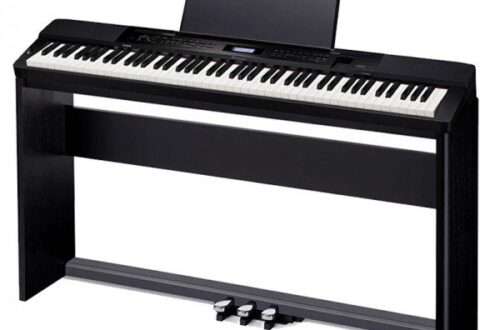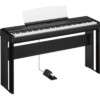Baroque musical culture: aesthetics, artistic images, genres, musical style, composers
Contents
Did you know that the era that gave us Bach and Handel was called “bizarre”? Moreover, they were not called in a positive context. “A pearl of irregular (bizarre) shape” is one of the meanings of the term “Baroque”. Still, the new culture would be wrong from the point of view of the ideals of the Renaissance: harmony, simplicity and clarity were replaced by disharmony, complex images and forms.
Baroque aesthetics
Baroque musical culture brought together the beautiful and the ugly, tragedy and comedy. “Irregular beauties” were “in trend”, replacing the naturalness of the Renaissance. The world no longer seemed holistic, but was perceived as a world of contrasts and contradictions, as a world full of tragedy and drama. However, there is a historical explanation for this.
The Baroque era spans about 150 years: from 1600 to 1750. This is the time of great geographical discoveries (remember the discovery of America by Columbus and Magellan’s circumnavigation of the world), the time of brilliant scientific discoveries of Galileo, Copernicus and Newton, the time of terrible wars in Europe. The harmony of the world was collapsing before our eyes, just as the picture of the Universe itself was changing, the concepts of time and space were changing.
Baroque genres
The new fashion for pretentiousness gave birth to new forms and genres. Was able to convey the complex world of human experiences opera, mainly through vivid emotional arias. The father of the first opera is considered to be Jacopo Peri (opera Eurydice), but it was precisely as a genre that opera took shape in the works of Claudio Monteverdi (Orpheus). Among the most famous names of the baroque opera genre are also known: A. Scarlatti (opera “Nero who became Caesar”), G.F. Telemann (“Mario”), G. Purcell (“Dido and Aeneas”), J.-B. Lully (“Armide”), G. F. Handel (“Julius Caesar”), G. B. Pergolesi (“The Maid -madam”), A. Vivaldi (“Farnak”).
Almost like an opera, only without scenery and costumes, with a religious plot, oratorio took an important place in the hierarchy of Baroque genres. Such a high spiritual genre as the oratorio also conveyed the depth of human emotions. The most famous baroque oratorios were written by G.F. Handel (“Messiah”)
Among the genres of sacred music, sacred ones were also popular cantatas и passion (passions are “passions”; perhaps not to the point, but just in case, let’s remember one root musical term – appassionato, which translated into Russian means “passionately”). Here the palm belongs to J. S. Bach (“St. Matthew Passion”).
Another major genre of the era – concert. The sharp play of contrasts, the rivalry between the soloist and the orchestra (), or between different groups of the orchestra (genre) – resonated well with the aesthetics of the Baroque. Maestro A. Vivaldi (“The Seasons”), I.S. ruled here. Bach “Bradenburg Concertos”), G. F. Handel and A. Corelli (Concerto grosso).
The contrasting principle of alternating different parts has been developed not only in the concert genre. It formed the basis sonatas (D. Scarlatti), suites and partitas (J.S. Bach). It should be noted that this principle existed earlier, but only in the Baroque era it ceased to be random and acquired an orderly form.
One of the main contrasts of Baroque musical culture is chaos and order as symbols of time. The randomness of life and death, the uncontrollability of fate, and at the same time – the triumph of “rationality”, order in everything. This antinomy was most clearly conveyed by the musical genre foreplay (toccatas, fantasies) and joints. I.S. Bach created unsurpassed masterpieces in this genre (preludes and fugues of the Well-Tempered Clavier, Toccata and Fugue in D minor).
As follows from our review, the contrast of the Baroque manifested itself even in the scale of the genres. Along with voluminous compositions, laconic opuses were also created.
The musical language of the Baroque
The Baroque era contributed to the development of a new style of writing. Entering the music arena homophony with its division into the main voice and accompanying voices.
In particular, the popularity of homophony is also due to the fact that the church had special requirements for writing spiritual compositions: all words must be legible. Thus, the vocals came to the fore, also acquiring numerous musical embellishments. The Baroque penchant for pretentiousness manifested itself here too.
Instrumental music was also rich in decoration. In this regard, it was widespread improvisation: the ostinato (that is, repeating, unchanging) bass, discovered by the Baroque era, gave scope for imagination for a given harmonic series. In vocal music, long cadences and chains of grace notes and trills often decorated operatic arias.
At the same time, it flourished polyphony, but in a completely different direction. Baroque polyphony is free-style polyphony, the development of counterpoint.
An important step in the development of musical language was the adoption of the tempered system and the formation of tonality. Two main modes were clearly defined – major and minor.
Affect theory
Since the music of the Baroque era served to express human passions, the goals of composition were revised. Now each composition was associated with affect, that is, with a certain state of mind. The theory of affects is not new; it dates back to antiquity. But in the Baroque era it became widespread.
Anger, sadness, jubilation, love, humility – these affects were associated with the musical language of the compositions. Thus, the perfect affect of joy and fun was expressed by the use of thirds, fourths and fifths, fluent tempo and trimeter in writing. On the contrary, the affect of sadness was achieved by the inclusion of dissonances, chromaticism and slow tempo.
There was even an affective characterization of tonalities, in which the harsh E-flat major paired with the grumpy E-major opposed the plaintive A-minor and the gentle G-major.
Instead of confinement …
The musical culture of the Baroque had a huge influence on the development of the subsequent era of classicism. And not only of this era. Even now, echoes of the Baroque can be heard in the genres of opera and concert, which are popular to this day. Quotations from Bach’s music appear in heavy rock solos, pop songs are mostly based on the baroque “golden sequence”, and jazz has to some extent adopted the art of improvisation.
And no one considers Baroque a “strange” style anymore, but admires its truly precious pearls. Albeit a weird shape.



